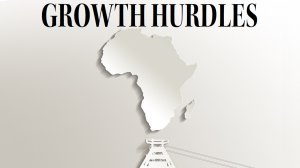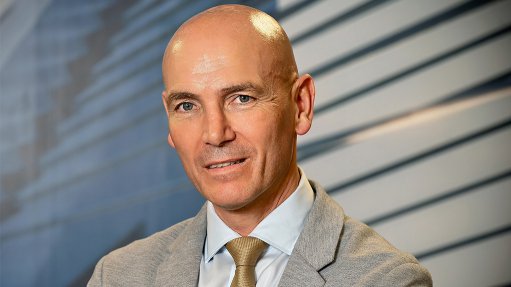Waning investor confidence, weak commodity prices among factors limiting growth of African mining sector
Along with the Arctic, sub-Saharan Africa remains the most underexplored and highly prospective mineralised region on earth. However, despite its ‘open for business’ approach and myriad investment opportunities – in terms of greenfield and brownfield projects across the commodity spectrum – Africa’s mining sector has, over the past several years, experienced limited growth.
This year proved no exception to that general trend, with Standard Bank global head of mining and metals Rajat Kohli describing it as a challenging year for the African mining sector. This is a result of a number of factors, ranging from the uncertain global macroeconomic environment, the loss of confidence in the mining sector, lower commodity prices and, most importantly, Africa’s challenging operating environment and lack of cost competitiveness.
EXTERNAL CHALLENGES
Broadly speaking, external factors beyond the control of African industry stakeholders are limiting the trajectory of mining growth on the continent, says Kohli, elaborating that this year has seen a deepening decline in investment capital for mining projects.
“Equity markets have largely closed up, while debt, though available, has been more selective,” he says.
Kohli adds that the difficulty in securing project capital has been most noticeable in the junior African mining space, with lenders exercising caution. This has prompted users of capital to seek alternative forms of funding.
Compounding the shrinking pool of project capital is the global loss of investor confidence in the mining sector.
“Many investors believe they did not substantially benefit from mining portfolio investments during the supercycle of the early 2000s. As a result, their confidence and willingness to invest in exploration and mining projects have largely dried up,” KPMG mining head Wayne Jansen tells Mining Weekly.
While Jansen acknowledges that there are some investors with substantial mining portfolios, he highlights the incongruence between shareholders’ short-term demands and the mining investments’ long-term requirements.
“‘Short termism’ is playing an increasingly influential role in an industry that requires long-term thinking, patience and investment across the cycles,” notes Jansen.
With this short-term approach driving investment decisions, it comes as little surprise that investors are shying away from African mining, given the long lead times required for projects on the continent, which often have to develop supporting infrastructure in addition to the mine.
Moreover, significantly depressed commodity prices are further damaging the attractiveness – and viability – of mining investments globally.
Financial analysts and advisers believe that commodity prices have bottomed out, or are, at least, nearing the bottom of the cycle. However, they also agree that the likelihood of commodity prices improving significantly in the short term is slim and that prices will remain flat in 2015.
Nevertheless, while these factors may prove influential, sub-Saharan Africa’s challenging and high-risk operating environment is proving to be the greatest impediment to attracting investment and facilitating robust growth in Africa’s mining sector.
BASKET OF CHALLENGES
Mining companies wanting to establish opera- tions in Africa, as well as those with existing mines on the continent, have to overcome numerous challenges to make projects viable, including inadequate regulations, a lack of infrastructure and logistics, insufficient skills, corruption, resource nationalism, and a dearth of geo- mapping and mining data.
According to the recently released ‘Africa Survey 2014’, published by Good Governance Africa (GGA), more than 45% of companies operating in Africa cited the lack of reliable electricity on the continent as a major problem, while 43% cited corruption as an obstacle, with 42% finding it difficult to secure bank loans.
Moreover, the World Bank’s 2015 Ease of Doing Business Index indicates that only three African countries – Mauritius, South Africa and Rwanda – rank among the top 50, with 30 African States ranked among the bottom 50.
Compounding these operational challenges is the ever-present spectre of political risk.
“This basket of challenges pushes up the average cost per ton of all commodities and significantly reduces the continent’s ability to be cost competitive against other mining jurisdictions,” explains Jansen.
Operational challenges aside, there is growing consensus that, at the heart of the continent’s inability to facilitate significant development of its mineral resource base is a fundamental disunity among African States.
“Africa is not a single country, as many foreign investors mistakenly seem to believe. It is a continent of 55 different countries, each with its own politics, regulations, cultures and ambitions,” elaborates Deloitte & Touche mining industry leader Tony Zoghby.
He concurs that each State’s individualised approach to the regulation and facilitation of the extractive industries, as well as the development of the sector on a project-by-project basis, has hampered mining growth on both a regional and a continental scale.
“Resource bodies and transport lines don’t always follow geographic borders,” notes Zoghby.
In light of this disunity, industry stakeholders are increasingly urging countries to collaborate in promoting the development of the mining sector and mitigating the myriad challenges facing African mining.
COLLABORATION INITIATIVES
While the problem of disunity is merely rhetoric, leadership organisations on the continent are beginning to shift their mindsets and modify their strategies in favour of a more united approach to developing Africa’s mining sector, beginning with implementing initiatives that facilitate collaboration in the mining space.
One of these initiatives is the African Minerals Development Centre (AMDC), launched in December 2013 under the auspices of the United Nation’s Economic Commission on Africa (ECA). The mission of the AMDC is to act as a roadmap for the minerals sector at continental level, and to work with member States and appropriate national and regional organisations to promote the transformative role of mineral resources in the development of the continent through increased economic and social links.
On a more practical level, the AMDC promotes the shared and enhanced use of geological and geospatial information in an attempt to foster a highly skilled and knowledge-driven mining sector. It also advocates for a well-governed African mining sector that is socially and environmentally accountable.
“The vision is clear and the aspiration simple – to use our mineral wealth to industrialise, bring development, deliver jobs and transform the livelihoods of the African people,” elaborated ECA special initiatives division officer-in-charge Fatima Denton, speaking at the launch of the AMDC.
Over the past 12 months, the AMDC has made strides in facilitating the development of the sector.
In late October, the African Minerals Geoscience Initiative, under the auspices of the African Union Commission and the AMDC, held a consultative meeting on the project’s progress so far. The main goal of the project, also referred to as the Billion Dollar Map, is to develop a comprehensive knowledge of Africa’s mineral endowment, to bring $380-million of investment into the organisation and interpretation of the continent’s geological information.
The expected result is to develop and obtain improved geological and mineral information systems to underpin investment in exploration and mining development.
Similarly, in early November, a memorandum of understanding was signed between the AMDC and the Australian Institute of Mining for Development Centre to provide expertise from the University of Western Australia and the University of Queensland to assist the AMDC in its efforts to become a centre of excellence in minerals and development. The agreement covers short courses on mining for development, joint research on topics of interest, study tours and fellowships, peer-to-peer learning and skills development.
Zoghby believes that, while these initiatives are certainly moves in the right direction, they are still just ‘baby steps’.
“Implementation . . . of cross-border and collaborative initiatives may prove quite challenging and it will be important for the top echelon of leadership at government, industry and investor level to keep the momentum going,” says Zoghby.
WAY FORWARD
While leadership organisations are certainly playing an important role in promoting development of the sector, Jansen believes that, on a more practical level, industry stakeholders need to apply innovative thinking and adopt a broader approach to mining.
He maintains that developing mines on a project-by-project basis with dedicated, single-stream infrastructure to support individual operations is a costly and unviable approach.
“Many African countries are unable to unlock this resource potential on their own, as they often don’t have the skills, the developmental capital or the power generation [capacity]. However, by pooling resources, opportunities and skills, the different regions of the continent can [organise] themselves in a way that is genuinely more attractive as an investment opportunity.”
Jansen believes that the way to do this is through megaprojects – not only for mining but also for agricultural and even value-added beneficiation.
“Moreover, with ‘short termism’ and commodity price volatility dominating the mining sector, miners wanting to exploit opportunities in Africa will need to consider investing in cluster developments to minimise costs and maximise benefits,” he says. Such cluster developments or megaprojects could implement hybridised funding models to access project capital, pool and share severely limited resources, use shared infra- structure – such as rail lines to export the ore to port and transport agricultural inputs and output – and benefit from beneficiation initiatives, should projects achieve the proper economies of scale.
Industry stakeholders believe that, currently, opportunity is ripe for cluster developments or mega mining projects concentrating on iron-ore in West Africa, the Copperbelt in Central Africa, liquefied natural gas in East Africa, and the coal belt in Southern Africa.
Comments
Press Office
Announcements
What's On
Subscribe to improve your user experience...
Option 1 (equivalent of R125 a month):
Receive a weekly copy of Creamer Media's Engineering News & Mining Weekly magazine
(print copy for those in South Africa and e-magazine for those outside of South Africa)
Receive daily email newsletters
Access to full search results
Access archive of magazine back copies
Access to Projects in Progress
Access to ONE Research Report of your choice in PDF format
Option 2 (equivalent of R375 a month):
All benefits from Option 1
PLUS
Access to Creamer Media's Research Channel Africa for ALL Research Reports, in PDF format, on various industrial and mining sectors
including Electricity; Water; Energy Transition; Hydrogen; Roads, Rail and Ports; Coal; Gold; Platinum; Battery Metals; etc.
Already a subscriber?
Forgotten your password?
Receive weekly copy of Creamer Media's Engineering News & Mining Weekly magazine (print copy for those in South Africa and e-magazine for those outside of South Africa)
➕
Recieve daily email newsletters
➕
Access to full search results
➕
Access archive of magazine back copies
➕
Access to Projects in Progress
➕
Access to ONE Research Report of your choice in PDF format
RESEARCH CHANNEL AFRICA
R4500 (equivalent of R375 a month)
SUBSCRIBEAll benefits from Option 1
➕
Access to Creamer Media's Research Channel Africa for ALL Research Reports on various industrial and mining sectors, in PDF format, including on:
Electricity
➕
Water
➕
Energy Transition
➕
Hydrogen
➕
Roads, Rail and Ports
➕
Coal
➕
Gold
➕
Platinum
➕
Battery Metals
➕
etc.
Receive all benefits from Option 1 or Option 2 delivered to numerous people at your company
➕
Multiple User names and Passwords for simultaneous log-ins
➕
Intranet integration access to all in your organisation





















